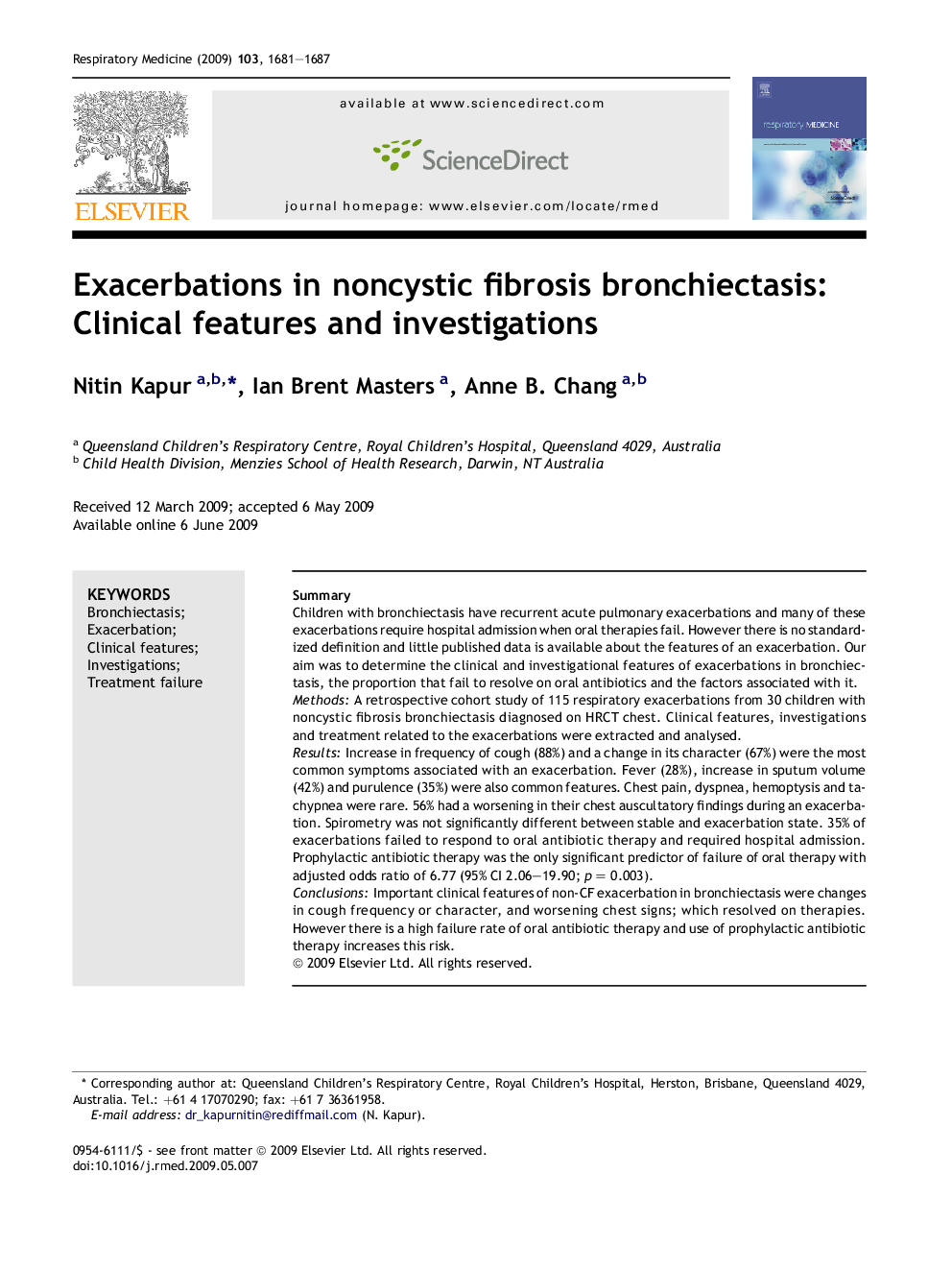| Article ID | Journal | Published Year | Pages | File Type |
|---|---|---|---|---|
| 4211080 | Respiratory Medicine | 2009 | 7 Pages |
SummaryChildren with bronchiectasis have recurrent acute pulmonary exacerbations and many of these exacerbations require hospital admission when oral therapies fail. However there is no standardized definition and little published data is available about the features of an exacerbation. Our aim was to determine the clinical and investigational features of exacerbations in bronchiectasis, the proportion that fail to resolve on oral antibiotics and the factors associated with it.MethodsA retrospective cohort study of 115 respiratory exacerbations from 30 children with noncystic fibrosis bronchiectasis diagnosed on HRCT chest. Clinical features, investigations and treatment related to the exacerbations were extracted and analysed.ResultsIncrease in frequency of cough (88%) and a change in its character (67%) were the most common symptoms associated with an exacerbation. Fever (28%), increase in sputum volume (42%) and purulence (35%) were also common features. Chest pain, dyspnea, hemoptysis and tachypnea were rare. 56% had a worsening in their chest auscultatory findings during an exacerbation. Spirometry was not significantly different between stable and exacerbation state. 35% of exacerbations failed to respond to oral antibiotic therapy and required hospital admission. Prophylactic antibiotic therapy was the only significant predictor of failure of oral therapy with adjusted odds ratio of 6.77 (95% CI 2.06–19.90; p = 0.003).ConclusionsImportant clinical features of non-CF exacerbation in bronchiectasis were changes in cough frequency or character, and worsening chest signs; which resolved on therapies. However there is a high failure rate of oral antibiotic therapy and use of prophylactic antibiotic therapy increases this risk.
